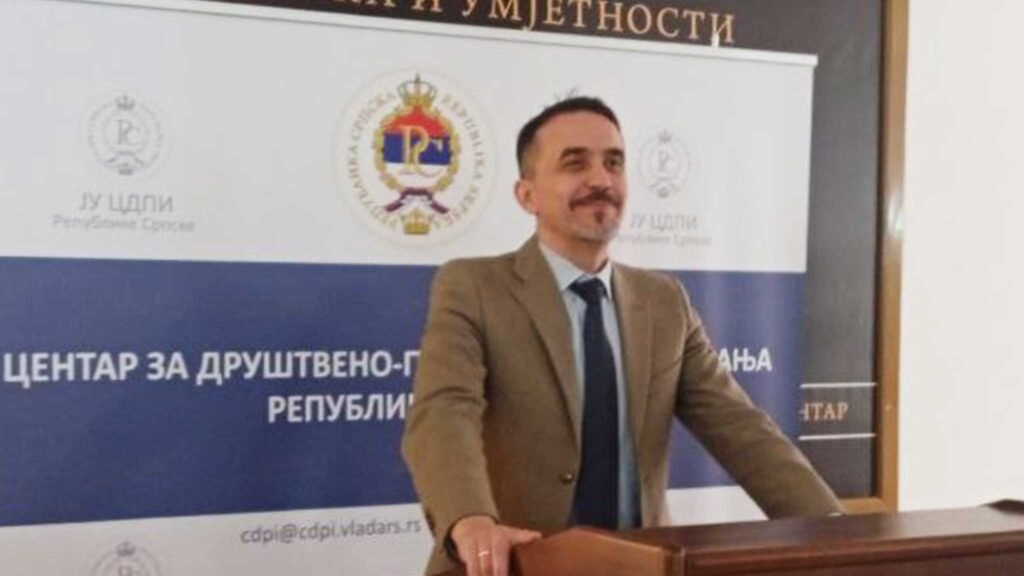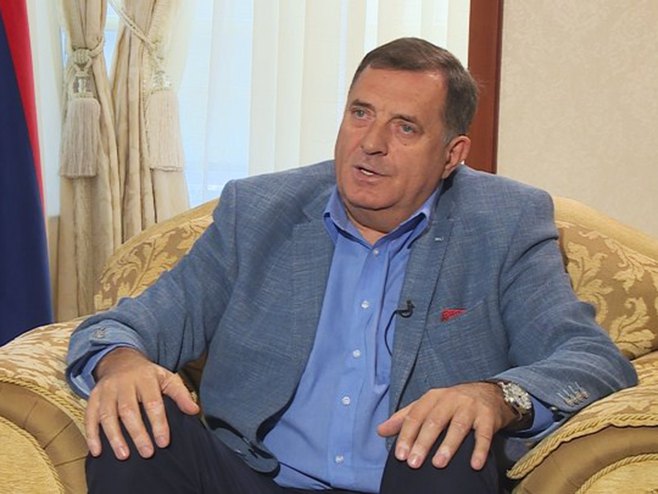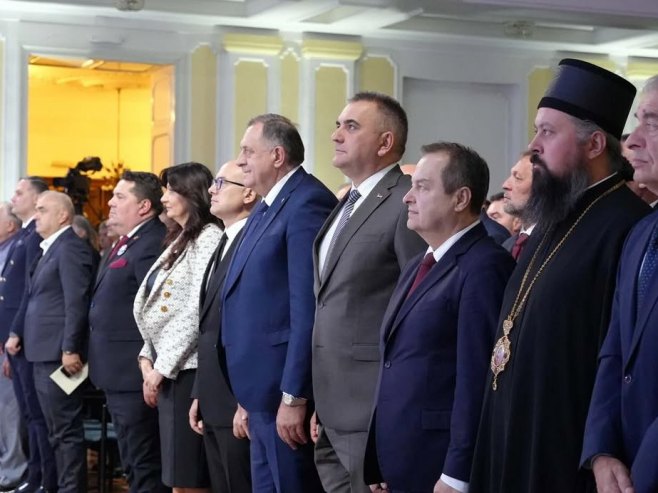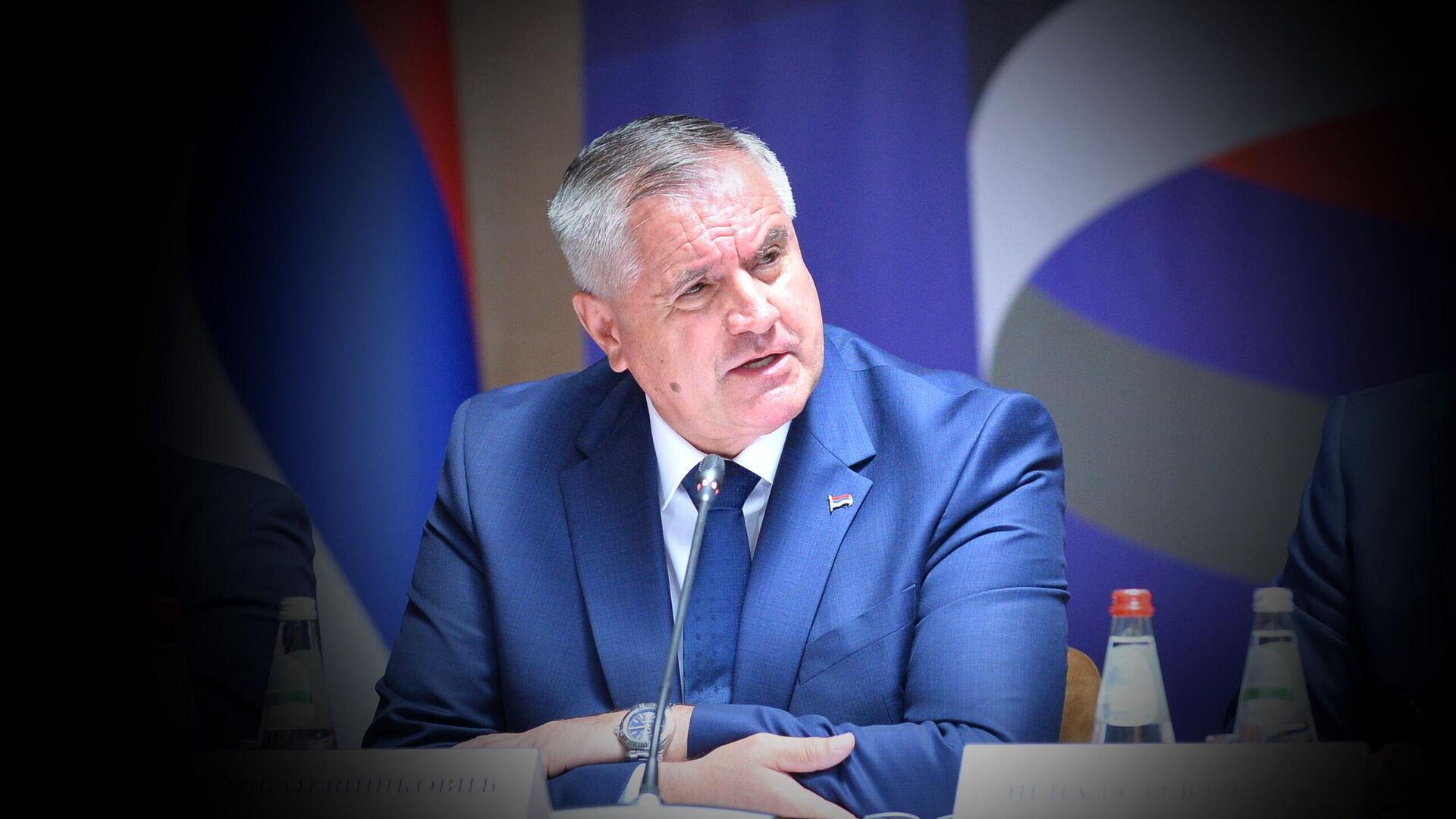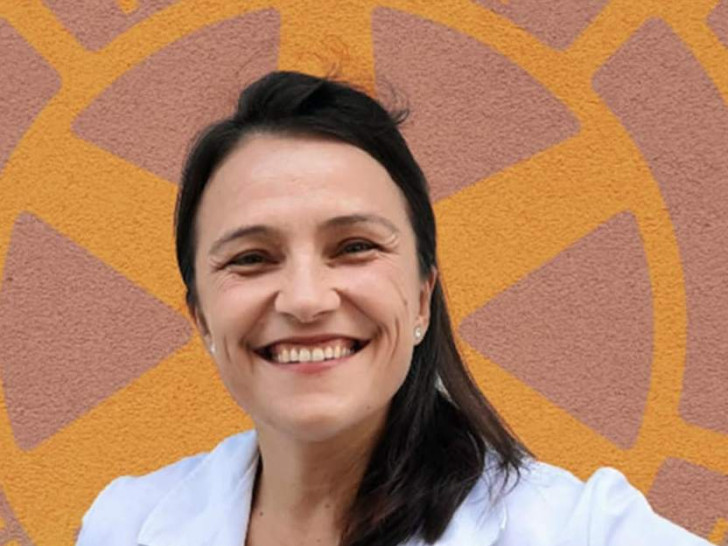The EU is displaying decreasing internal self-confidence, yet it continues to view the Serb factor—Serbia and Republika Srpska—through a lens of restriction and pressure, rather than acknowledging the specific context and political equality, emphasized Milan Milaković, a researcher in international relations and military affairs at the Center for Socio-Political Research (CDPIRS) of Republika Srpska.
Milaković stressed that the EU’s approach to Republika Srpska reflects a simplified perception of the complex constitutional and political reality of post-Dayton Bosnia and Herzegovina, disregarding internal competencies, the constituent status of peoples, and the equality of entities enshrined in the Dayton Agreement.
“The demands placed on Serbia—from recognizing the unilaterally declared independence of Kosovo to aligning with sanctions against Russia—are made without a clear vision or long-term guarantees,” Milaković wrote in an opinion piece for SRNA.
The gap between EU ambitions and actual capacities
Milaković noted that in an era where security has re-emerged as a key political category, the mindset guiding EU decisions does not indicate a proper understanding of global processes.
“Moreover, the narrative of strategic and geopolitical autonomy reveals a deep gap between ambition and actual capacity. This is evidenced by the limited scope of initiatives such as Permanent Structured Cooperation (PESCO) in defense and the European Defence Fund (EDF). Signs of internal weakening further highlight this gap,” Milaković explained.
He added that Germany’s industrial output, as the EU’s key economic engine, has experienced a double-digit decline over the last decade. Meanwhile, the EU’s own projections overlook demographic erosion, technological dependency, and political fragmentation, all of which undermine the foundations of any credible defense architecture.
“In addition, the new security context raises questions about the sustainability of European democratic institutions. Prolonged instability and crisis conditions benefit executive authorities, narrow public discourse, and promote technocratic and security-driven approaches that escape democratic oversight. In this light, a hypothetical question emerges: does Europe today even have a clear idea of the justification and strategic logic of the path it is following, or is it moving in a direction dictated by decades of dependency and inertia rather than deliberate choice? Unfortunately, the answer is not encouraging,” said Milaković.
According to him, the modern EU stands in the middle of a vortex of changes that directly affect its ability to defend itself and project power.
Does the EU have the capacity to act in the modern world?
“A project that once symbolized the promise of lasting peace and stability is now faced with a fundamental question—does it even have the capacity to act in the modern world? The decline in industrial production, energy shortages and/or high energy prices, and the shrinking of the working-age population all directly undermine defense capabilities and, more broadly, the Union’s strategic endurance as a geopolitical actor,” Milaković said.
At the same time, he added, dependence on external energy sources—accelerated by current geopolitical developments—represents not just an economic but a security challenge.
“Without a resolved energy question, the sustainability of any defense strategy remains questionable. The EU’s geopolitical orientation—marked by an intensified distancing from Russia and an overtly ideological approach—affects not only foreign policy but internal narratives as well. Sanctions against Russia, introduced in 2022, have led to a significant rise in energy prices across the EU, further straining member states’ economies and weakening their energy stability,” Milaković noted.
He emphasized that Europe is acting less and less in the spirit of realpolitik and interest-based balance, and increasingly sliding into ideological positions disconnected from reality and internal cohesion.
“Even though its security dependence on the US and NATO persists, the new circumstances—from internal divisions to global competition—require a fundamental reassessment: is strategic autonomy a realistic option, or will Europe remain reliant on external guarantees in a world that increasingly has no room for passive actors?” Milaković asked.
A growing lack of consensus within the EU
According to him, reaching consensus within the Union is becoming ever more elusive—fundamental differences in member states’ views on key issues such as Ukraine, relations with the US, migration, and security continue to complicate the formulation of a common strategy.
“A telling example is the division over military aid to Ukraine, where Hungary and Poland hold fundamentally opposing positions,” said Milaković.
Beyond traditionally influential countries like Germany and France, he added, the political rhythm of the EU is increasingly dictated by the Baltic states and Warsaw—whose approach, shaped by historical fears, amplifies divisions and steers the Union away from a shared vision.
“This course of action increasingly resembles political pathology within the EU, as there is no uniform willingness among member states to pursue a radicalization of relations. This further obstructs the formulation of a coherent strategy and undermines the foundations of European cohesion,” the CDPIRS researcher noted.
Deep rifts in Washington-Brussels relations
Milaković stated that the American factor remains crucial within this security vortex, even as the future of its presence becomes uncertain.
“While the current administration in Washington is increasingly signaling the need to end the conflict in Ukraine through diplomatic means, some European countries—especially the aforementioned Baltic states—continue to encourage prolongation of the conflict,” he emphasized.
Milaković added that these starkly opposing positions further complicate transatlantic relations and reveal deep rifts in terms of values and strategy.
“At the same time, the new economic tariffs imposed by the US on the EU reinforce the sense of structural dependence and affirm the perception of Europe as a space caught between declarative solidarity and factual economic subordination,” Milaković noted.
EU inconsistency toward Beijing
Milaković stressed that relations with China—a global player increasingly shaping both the economy and security dynamics—further complicate the security vortex Europe finds itself in.
“For Europe, China is both an essential industrial partner and a geopolitical challenge, particularly in the context of the US strategy of containing Chinese influence,” he explained.
According to him, inconsistency among EU member states in their stance toward Beijing undermines the possibility of forging a unified foreign and security policy.
“While one part of the continent seeks to maintain stable trade relations, another adopts the confrontational rhetoric coming from Washington. This ambiguity not only weakens the EU’s capacity for geopolitical maneuvering but also leaves it without a clear strategy in potential conflict scenarios involving the Asia-Pacific region or supply chains,” Milaković said.
The China issue, he added, thus becomes a question of Europe’s overall defensive orientation in an increasingly unstable global environment.
Migration: the primary challenge
“While EU institutions focus on global projection, the most tangible and sensitive issue within European societies is migration, which is no longer merely a humanitarian or identity issue but increasingly a primary challenge to strategic and security stability,” said Milaković.
A particularly sensitive aspect, he added, is the growing demographic imbalance between the domestic population and migrant communities in more developed EU countries.
“While the domestic populations of most member states face chronic low birth rates and aging, migrant communities are experiencing steady growth—leading to a growing demographic disparity. This directly affects the staffing base of defense structures—not only in quantitative but also in cultural, integrative, and security terms,” Milaković emphasized.
According to him, the constant influx of migrants, spurred by conflict, places additional strain on institutions and security services of EU states.
“Instead of a responsible strategy, we see growing social fragmentation, political radicalism, and a foundation for extremism—including the emergence of parallel structures in urban centers. Migration, once viewed as an opportunity to replenish the labor force, is increasingly perceived as a security threat and a destabilizing factor in terms of internal defense. This is evidenced by terrorist attacks in recent years across Western Europe originating from migrant communities,” Milaković said.
Beyond quantitative differences in birth rates, he noted, there are qualitative shifts in population structures in some countries, leading to de facto transformation of social and cultural composition.
“In several large European cities, trends show that migrants make up a significant portion of the younger generation, while at the same time, there is a relative decline in the local population. This gradual but pronounced transformation—unfolding without public debate—fuels a sense of insecurity and opens the door to political radicalization, precisely because institutions refuse to address issues that much of the population sees as existentially important,” said Milaković.
Who will form the human base of European defense?
Milaković pointed out that increasingly frequent calls for EU militarization raise a key question—who will form the human base of European defense?
“The lack of interest among younger generations in Germany and France for military service highlights a systemic issue. Population aging, low birth rates, and prevailing values that discourage a sense of defensive responsibility further diminish an already weakened defense personnel base,” he emphasized.
In this context, he added, we must also remember that most EU member states are NATO members, bound by articles 3, 5, and 8 of the Washington Treaty—the latter emphasizing that European defense initiatives must be developed in line with existing NATO obligations, limiting any full autonomous development as long as the US remains actively engaged in the alliance.
“Viewed this way, the current process of militarization must also be understood as a response to mounting demands from the United States, such as the call to raise defense spending to five percent of GDP,” Milaković said.
Still, he added, it remains unclear how such a demand will be reconciled with the EU’s concept of strategic autonomy in a financially sustainable way.
“At the same time, key obstacles—from limited production capacity to technological and raw material dependency—are being overlooked. These seriously hinder ambitions for independent defense development. That very gap between political ambition and real capacity clearly exposes the paradox of militarization without a strategic or industrial foundation,” noted the CDPIRS researcher.
Serbia and Republika Srpska: between European integration and resistance to structural global shifts
Milaković noted that the Balkans most clearly illustrate the security and political contradictions of the EU’s strategy—being a space where diverging approaches and interests collide.
He emphasized that Serbia and Republika Srpska remain in an ambivalent position between European integration and resistance to global structural shifts.
“While the EU shows less internal confidence, it demands unconditional loyalty from its neighbors—often in the form of pressure rather than equal dialogue. Demands toward Serbia—from recognizing Kosovo’s independence to aligning with sanctions against Russia—are made without clear vision or long-term guarantees. This approach resembles political conditioning rather than an attempt to build sustainable partnerships and has followed Serbia since the 1990s,” Milaković said.
In contrast, he noted, the approach to Republika Srpska reflects a simplified view of the complex constitutional and political landscape of post-Dayton Bosnia and Herzegovina, disregarding internal competences, the constituent status of peoples, and entity equality.
He argued that in both cases, there is a continuation of a Western policy that views the Serb factor through restriction and pressure, rather than respecting specific contexts and political parity.
“Such an approach to the Serb factor, maintained over time, reflects more a sense of threat than a willingness for constructive dialogue. It reveals a lasting mistrust that prevents recognition of legitimate interests and undermines the principle of equality that should form the basis of Europe’s regional approach,” Milaković wrote.
According to him, the Balkans are not merely Europe’s geopolitical periphery but a region where Europe’s internal dilemmas, its stance on sovereignty, diversity, and democratic pluralism, are projected most directly.
Security initiatives: on one side Croatia, Albania, and so-called Kosovo; on the other Serbia and Hungary
Milaković pointed out that two opposing trends are emerging in the security sphere: on one side are the initiatives of Croatia, Albania, and so-called Kosovo—forming a joint security space with US and NATO backing—while on the other is the strategic alignment of Serbia and Hungary, centered around preserving neutrality and stability in the face of growing geopolitical pressure.
“However, it’s important to note that both axes—despite their differences—rely on existing NATO security infrastructure. This indicates that regional moves still operate within the framework of established Western-centered structures. Instead of crafting a coherent regional policy, the EU allows parallel action logics to form within a space still largely controlled from the outside,” said Milaković.
European delusions
Milaković concluded by asking whether Europe is capable of objectively assessing its strategic relevance in a rapidly changing world, amid a vortex where economic interests, demographic challenges, geopolitical ambitions, and security gaps intersect.
“Instead of a sober assessment of reality, the EU is retreating into the symbolic realm of old narratives. Guided by illusions about its significance and capacities, the EU’s new military initiatives deepen internal contradictions and fuel radicalization, both within its borders and internationally,” he emphasized.
By abandoning its founding principles, he added, the Union is turning into a tool of political pressure, and the consequences of such actions are increasingly threatening its own foundations and global stability.
“Although it claims to seek independence, the EU’s actions increasingly reflect deeply entrenched illusions about a significance that has historically eroded,” Milaković said.
He recalled philosopher Antonio Gramsci’s idea that political maturity begins where “pessimism of the intellect meets optimism of the will”—the ability to see reality without illusions, while still choosing to act.
“Contemporary Europe, however, reveals a deficit in both insight and will, suggesting that the vortex it is caught in is not perceived as a crisis but accepted as the new normal. It is precisely this normalization of historical blindness that may prove to be its most costly strategic illusion. The greatest danger, as once observed, is not what we don’t know, but what we wrongly believe we do. Europe, which now believes more in its self-image than in objective reality, risks replacing its historical role with an illusion that is unsustainable—and paying a steep price for it,” Milaković concluded in his opinion piece published on cdpirs.org.
Source: RTRS



